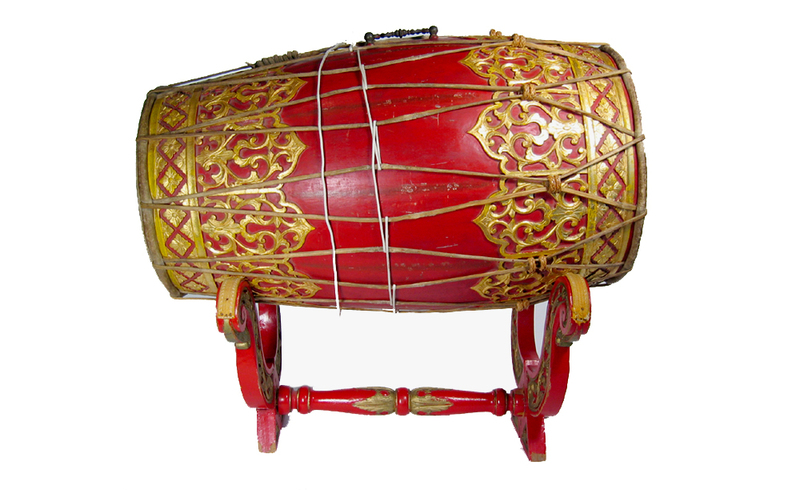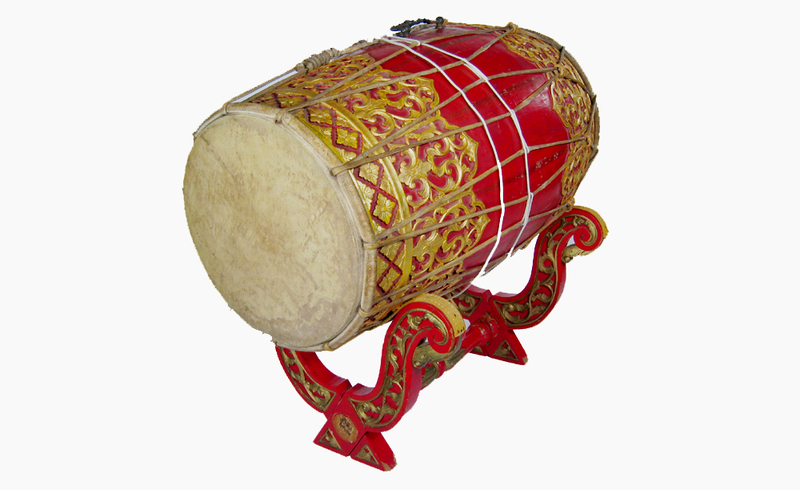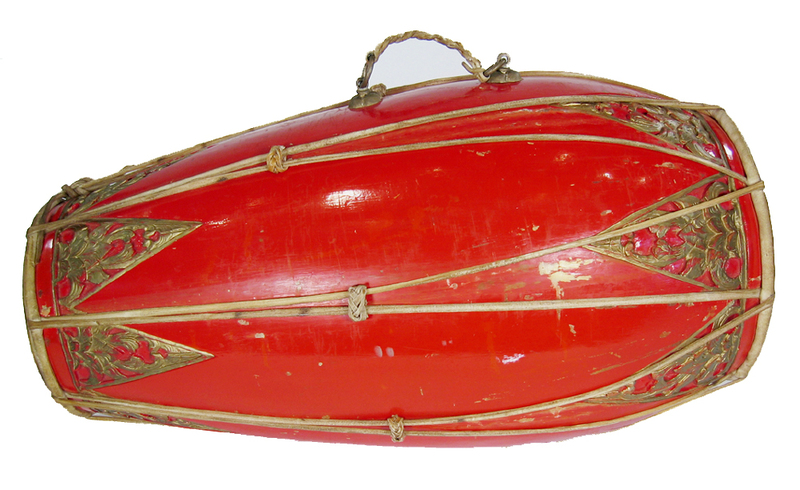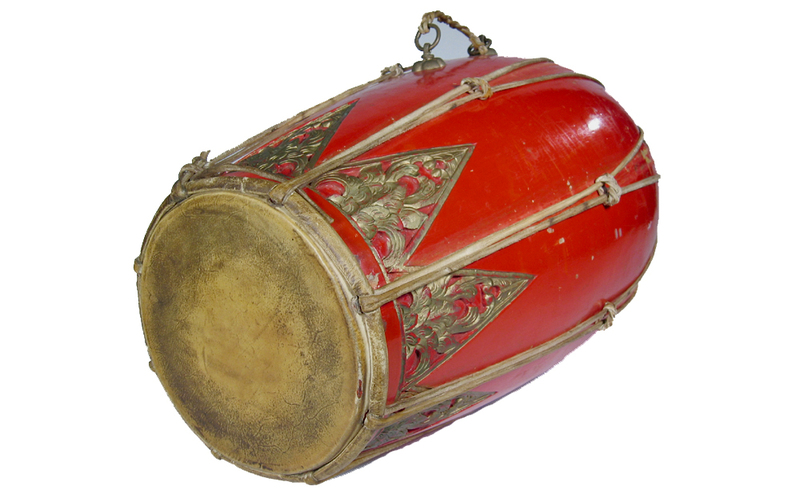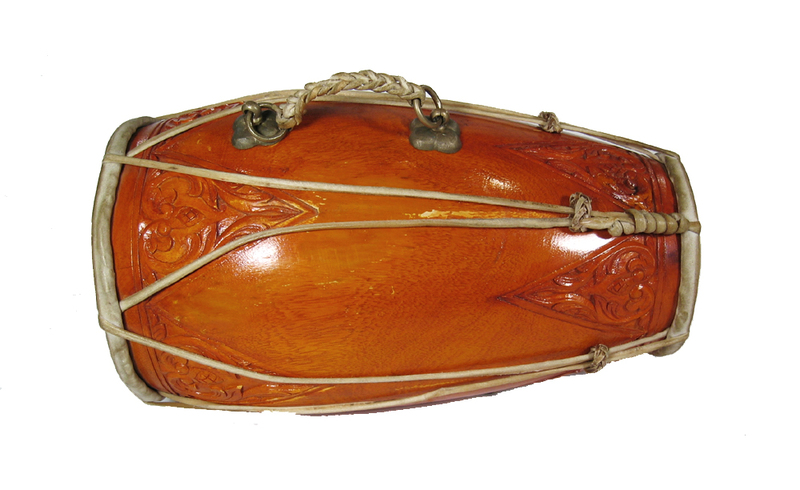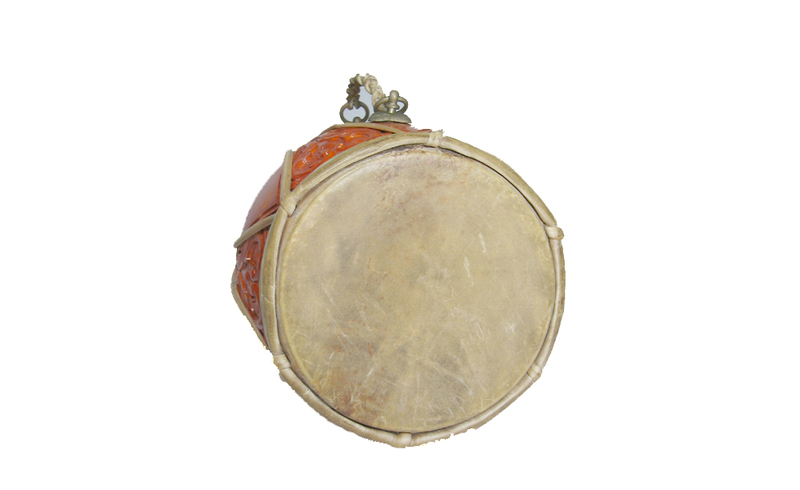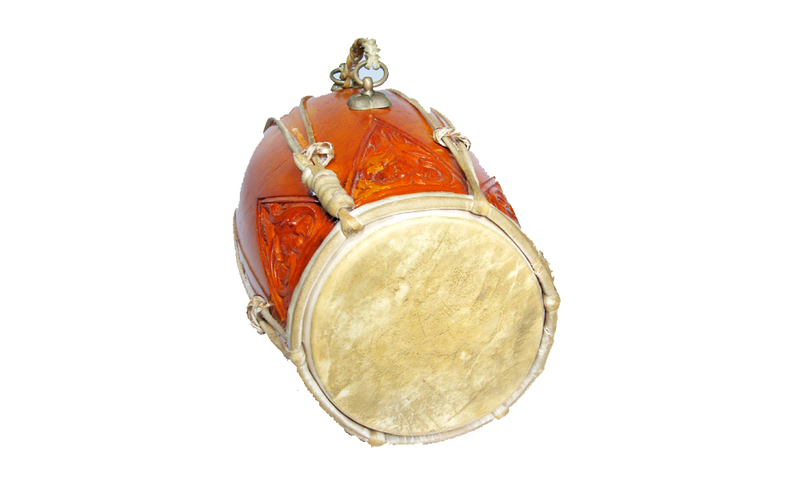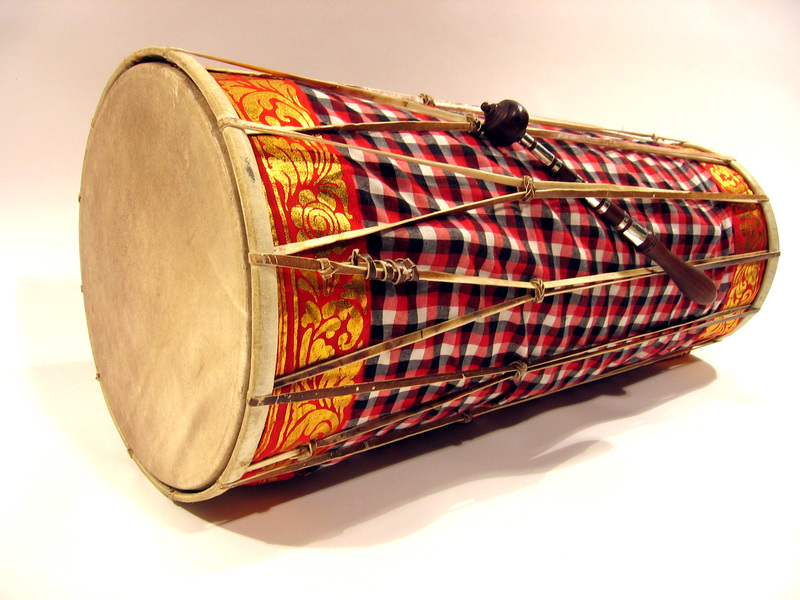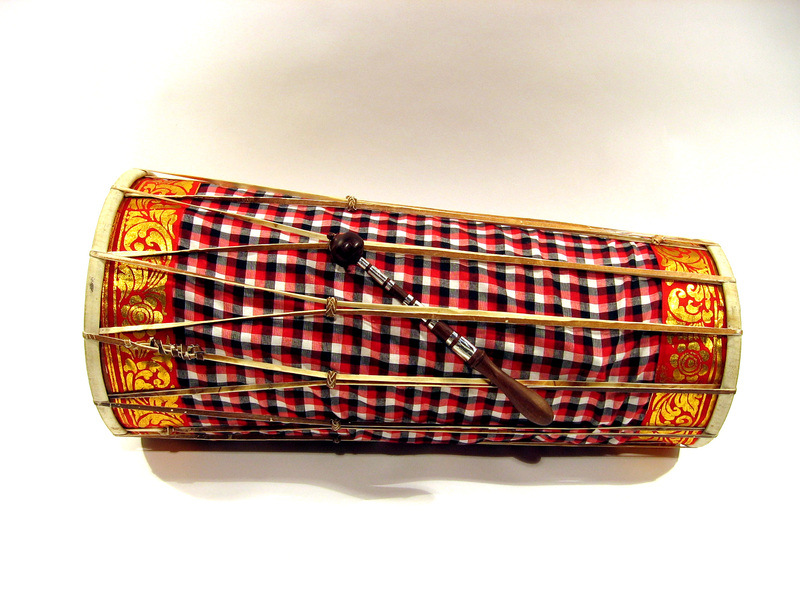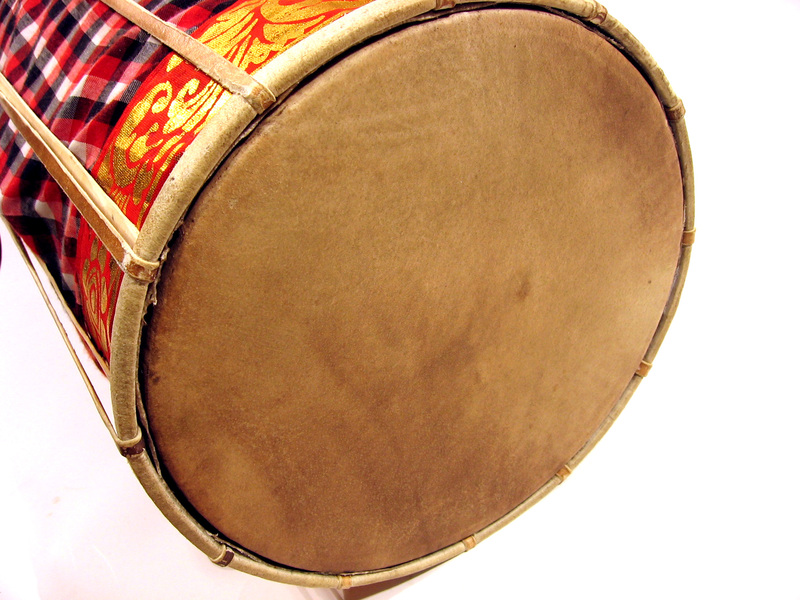Kendhang
Title
Kendhang
Description
Physical description:
The kendhang is a two-headed, barrel shaped, asymmetrical drum with heads that are stretched with leather hoops laced in a “Y” pattern. Held horizontally on the stand, kendhang is played with bare hands (part of the palm and/or fingers). Commonly, the large head is played with the right hand, the small head with the left hand. Although not always present, there is another kind of drum called bedhug. It is a large, symmetrical, barrel-shaped drum with two nailed heads of the same diameter. The bedhug is hung on a stand or placed on a wooden frame. It is played with a mallet. It is exclusively played for loud pieces or for accompanying dance.
Role in the gamelan ensemble:
The kendhang is one of the leading instruments in the ensemble. It supervises the articulation of temporal flow and density of the music (this is a concept called irama). There are four kinds of kendhang: kendhang ageng, wayangan, ciblon, and ketipung. The size and function of each drum in the ensemble differentiate one drum from the other. The style of playing and the emotive content of a gendhing (or a section of it) determine which kendhang and drumming style the drummer must employ. Kendhang ageng, the largest drum, is used for majestic gendhing (or a section of it), usually in an expansive formal structure (gongan). In combination with ketipung, kendhang ageng is used for pieces with a shorter gongan structure. Kendhang wayangan, the medium size drum, is used to accompany wayang performance. And kendhang ciblon is a more animated drumming style, playing rhythmic patterns associated with dance movements. The interplay and interaction between the playing style of kendhang and the emotive content and playing style of a gendhing is one of the important elements of the ensemble’s performance.
-Sumarsam, 2004
The kendhang is a two-headed, barrel shaped, asymmetrical drum with heads that are stretched with leather hoops laced in a “Y” pattern. Held horizontally on the stand, kendhang is played with bare hands (part of the palm and/or fingers). Commonly, the large head is played with the right hand, the small head with the left hand. Although not always present, there is another kind of drum called bedhug. It is a large, symmetrical, barrel-shaped drum with two nailed heads of the same diameter. The bedhug is hung on a stand or placed on a wooden frame. It is played with a mallet. It is exclusively played for loud pieces or for accompanying dance.
Role in the gamelan ensemble:
The kendhang is one of the leading instruments in the ensemble. It supervises the articulation of temporal flow and density of the music (this is a concept called irama). There are four kinds of kendhang: kendhang ageng, wayangan, ciblon, and ketipung. The size and function of each drum in the ensemble differentiate one drum from the other. The style of playing and the emotive content of a gendhing (or a section of it) determine which kendhang and drumming style the drummer must employ. Kendhang ageng, the largest drum, is used for majestic gendhing (or a section of it), usually in an expansive formal structure (gongan). In combination with ketipung, kendhang ageng is used for pieces with a shorter gongan structure. Kendhang wayangan, the medium size drum, is used to accompany wayang performance. And kendhang ciblon is a more animated drumming style, playing rhythmic patterns associated with dance movements. The interplay and interaction between the playing style of kendhang and the emotive content and playing style of a gendhing is one of the important elements of the ensemble’s performance.
-Sumarsam, 2004
Geographic region
Indonesia
Collection
Citation
“Kendhang,” Wesleyan University Virtual Instrument Museum 2.0, accessed December 14, 2025, https://wesomeka-test.wesleyan.edu/vim2/items/show/9.
